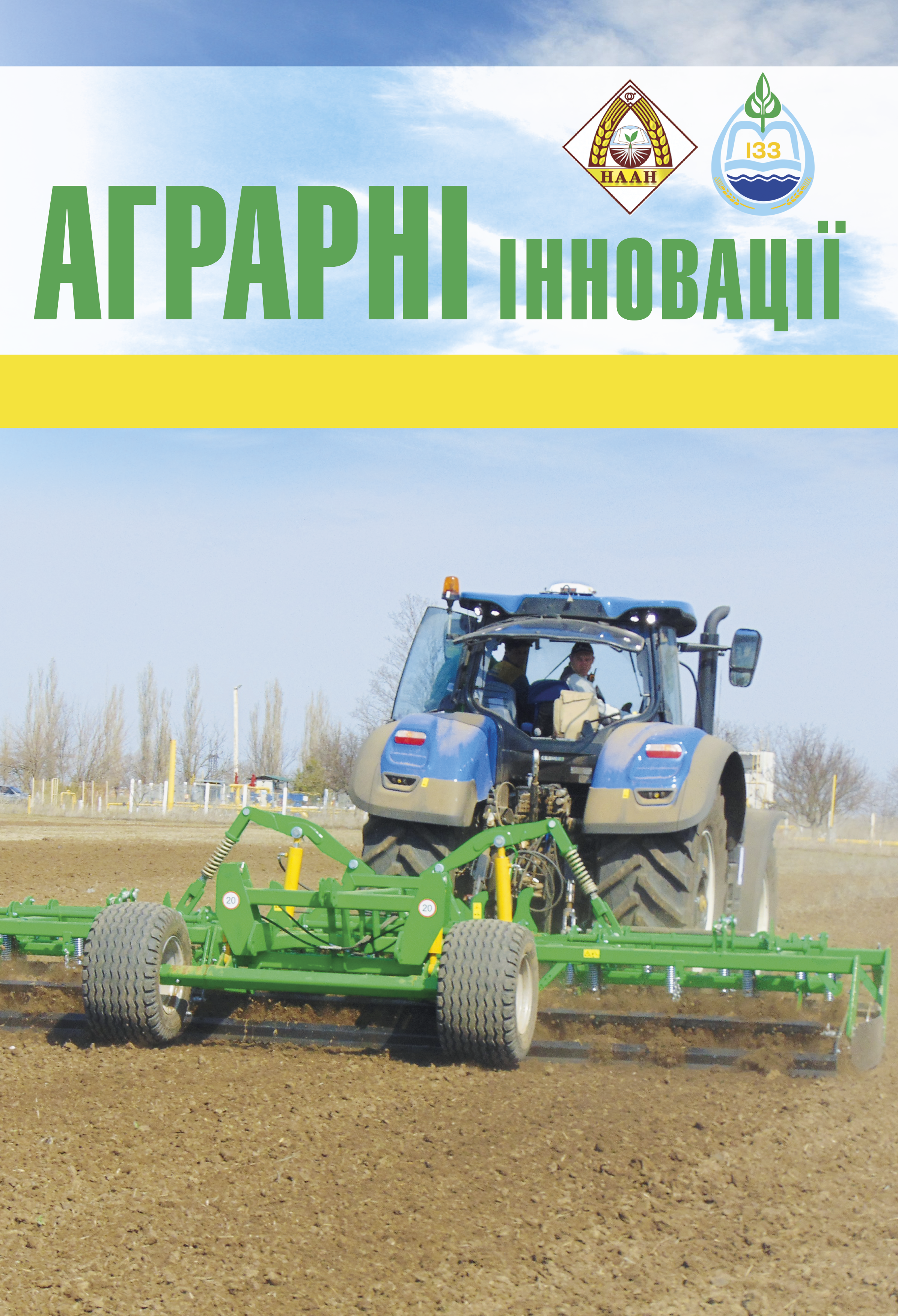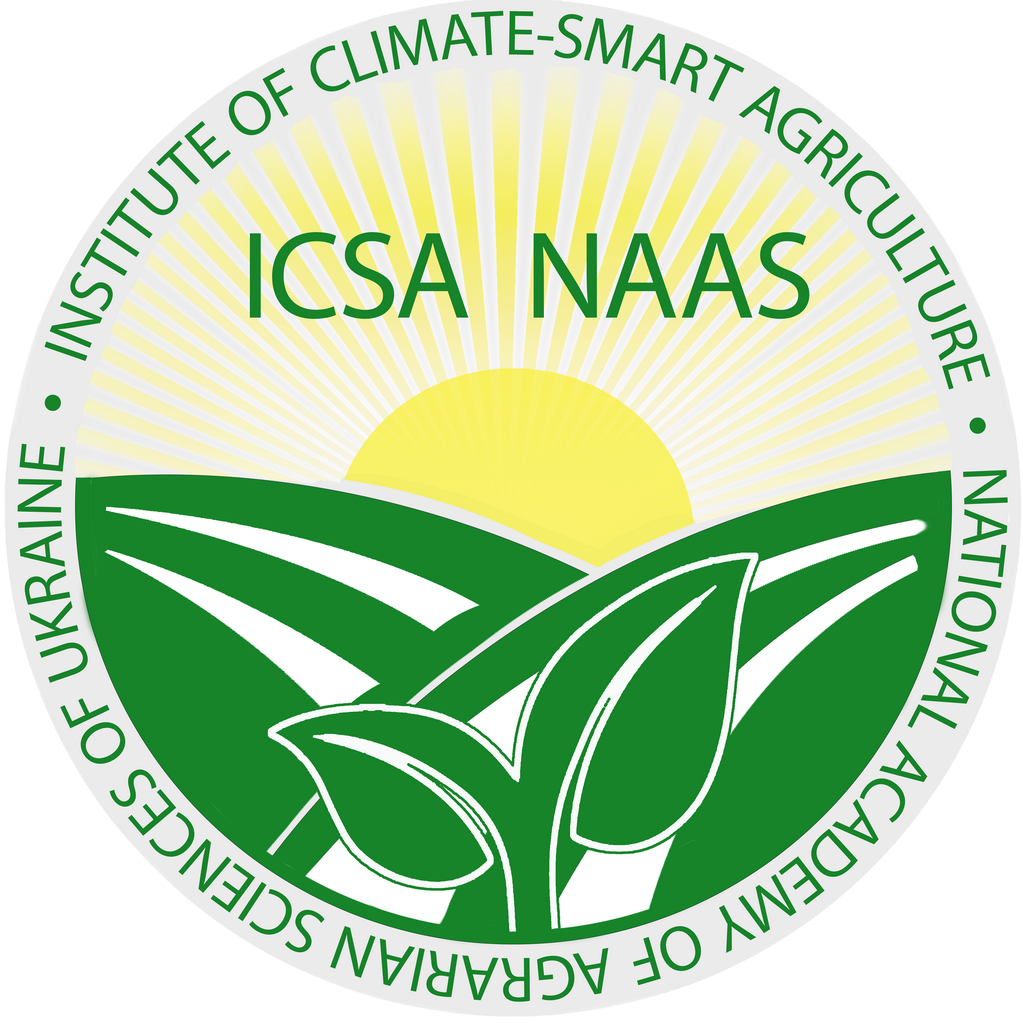Variability and correlations of sainfoin seed yield components (Onobrychis viciifolia Scop.)
Abstract
The aim of the research was to identify some morphological traits associated with yield, to identify key traits for the selection of these indicators and to facilitate breeding work to create a new sainfoin breeding material. Materials and methods of the research. The research was conducted at the Odessa State Agricultural Station of the Institute of Crop Science and Technology of the National Academy of Sciences of the Russian Academy of Sciences, Khlibodarske village, Odesa region, Odessa district during 2023-2024. The study included: 12 samples of sainfoin Onobrychis viciifolia Scop. when used as seeds. The seed yield from one plant and its components were taken into account: the number of seeds per 1 panicle and per plant and the number of panicles per plant, the weight of 1000 seeds, the number of stems per plant, the height of plants. Research results. Variability of traits with a wide range from 7.5 to 54.8% was revealed. The most variable traits were seed yield (V =54.8%) and the number of seeds (V =52.3%) per plant. Samples D 12 and D 13 were distinguished, which significantly exceeded the average population, in terms of seed yield by 1.7 times, and in terms of the number of seeds per plant by 1.5-2.3 times. Positive relationships of varying strength were revealed between the yield of seeds per plant and all its components. There was a strong correlation with the main components of seed yield: the number of panicles per plant (r =0.853) and seeds per panicle (r =0.915), weaker with height (r =0.569), number of stems per plant (r =0.512) and 1000-seed weight (r =0.431) and very weak with the number of seeds per panicle (r =0.320). Conclusions. Variability of traits with a coefficient of variation (V) from 7.5 to 54.8% was established. The most variable traits were seed weight (V =54.8%) and the number of seeds (V =52.3%) per plant. Samples D 12 and D 13 were distinguished, which exceeded the average population for all traits, primarily for seed yield by 1.7 times, the number of seeds per plant by 1.5-2.3 times, respectively. A high positive relationship was determined between seed weight and all its components. A high relationship with the number of panicles per plant (r =0.853) and seeds in a panicle (r =0.915).
References
2. Craine E.B. et al. Nutritional quality of onobrychisviciifolia (Scop.) seeds: a potentially novel perennial pulse crop for human use. Legume Science. 2023. 5:e189. https://doi.org/10.1002/leg3.189
3. Elci S. et al. Sainfoin (Onobrychis spp.) Forage Crop for Anatolia. Deutsch-Turkische Agrarforschung. Ankara, 1995.
4. Guo S.B. et al. Impacts of mean climate and extreme climate indices on soybean yield and yield components in Northeast China. Science of The Total Environment. 2022. 838:156284. https://doi.org/10.1016/j.scitotenv.2022.156284
5. Hussan S. et al. Study of variability and association analysis for various agro morphological traits in lentils (Lens culinaris M.). J. Pharmacogn Phytochem. 2018. Vol. 7. Issue 2. P. 2172–2175. DOI: 10.13140/RG.2.2.22074.11207
6. Kumar S. et al. Global lentil production constraints and strategies. SATSA Mukhapatra-Ann Techn. 2013. Vol. 17. P. 1–13.
7. Mahajan R.C., Wadikar P.B., Pole S.P., Dhuppe M.V. Variability, correlation, and path analysis studies in sorghum. Res J Agri Sci. 2011. Vol. 2. Issue 1. P. 101–103.
8. Mora-Ortiz M., Smith L.M.J. Onobrychis viciifolia: A comprehensive literature review of its history, etymology, taxonomy,genetics, agronomy and botany. Plant Genetic Resources: Characterization and Utilization. 2018. Vol. 16. P. 403–418. https://doi.org/10.1017/S1479262118000230
9. Ortiz-Bobea A. et al. Anthropogenic climate change has slowed global agricultural productivity growth. Nature Climate Change. 2021. Vol. 11. Issue 4. P. 306–312. https://doi.org/10.1038/s41558-021-01000-1
10. Radovic J. et al. Phenotyping diversity within a collection of sainfoin (Onobrychis sativa L.) populations. Symposium of the European Grassland Federation and the 33rd Meeting of the EUCARPIA Section Fodder Crops and Amenity Grasses, Zürich, Switzerland. 24–27 June 2019. Р. 400-402.
11. Samonte S.O.P.B., Wilson L.T., McClung A.M. Path analysesof yield and yield related traits of fifteen diverse ricegenotypes. Crop Science. 1998. Vol. 38. P. 1130-1136. https://doi.org/10.2135/cropsci1998.0011183X003800050004x
12. Smith L., Smith. Sainfoin as a resource for pollinators. Cotswold Grass Seeds Direct. 38-40. http://legumeplus.eu/news/sainfoin-growers-guide-now-available
13. Tadesse T., Leggesse T., Mulugeta B., Sefera G. Correlation and path coefficient analysis of yield and yield components in lentil (Lens culinaris Medik.) germplasm in the highlands of Bale, Ethiopia. International Journal of Biodiversity and Conservation. 2014. Vol. 6. Issue 1. P. 115-120. DOI: 10.5897/IJBC2013.0618
14. Wang Z. et al. Separating out the influence of climatic trend, fluctuations, and extreme events on crop yield: A case study in Hunan Province, China. ClimateDynamics. 2018. Vol. 51. P. 4469–4487. https://doi.org/10.1007/s00382-017-3831-6
15. Zhang H. et al. Stomatal movements are involved in elevated CO2-mitigated high temperature stress in tomato. Physiologia Plantarum. 2019. Vol. 165. P. 569–583. https://doi.org/10.1111/ppl.12752.
16. Голобородько С.П., Сахно Г.В. Еспарцет: Науковий огляд. Херсон. Айлант, 2013. 216 с.
17. Черенков А.В., Тарасенко О.А. Шляхи підвищення насіннєвої продуктивності еспарцету в умовах північної підзони Степу України. Бюл. Ін-ту зерн. госп-ва УААН. 2005. № 23-24. С. 143-146.






